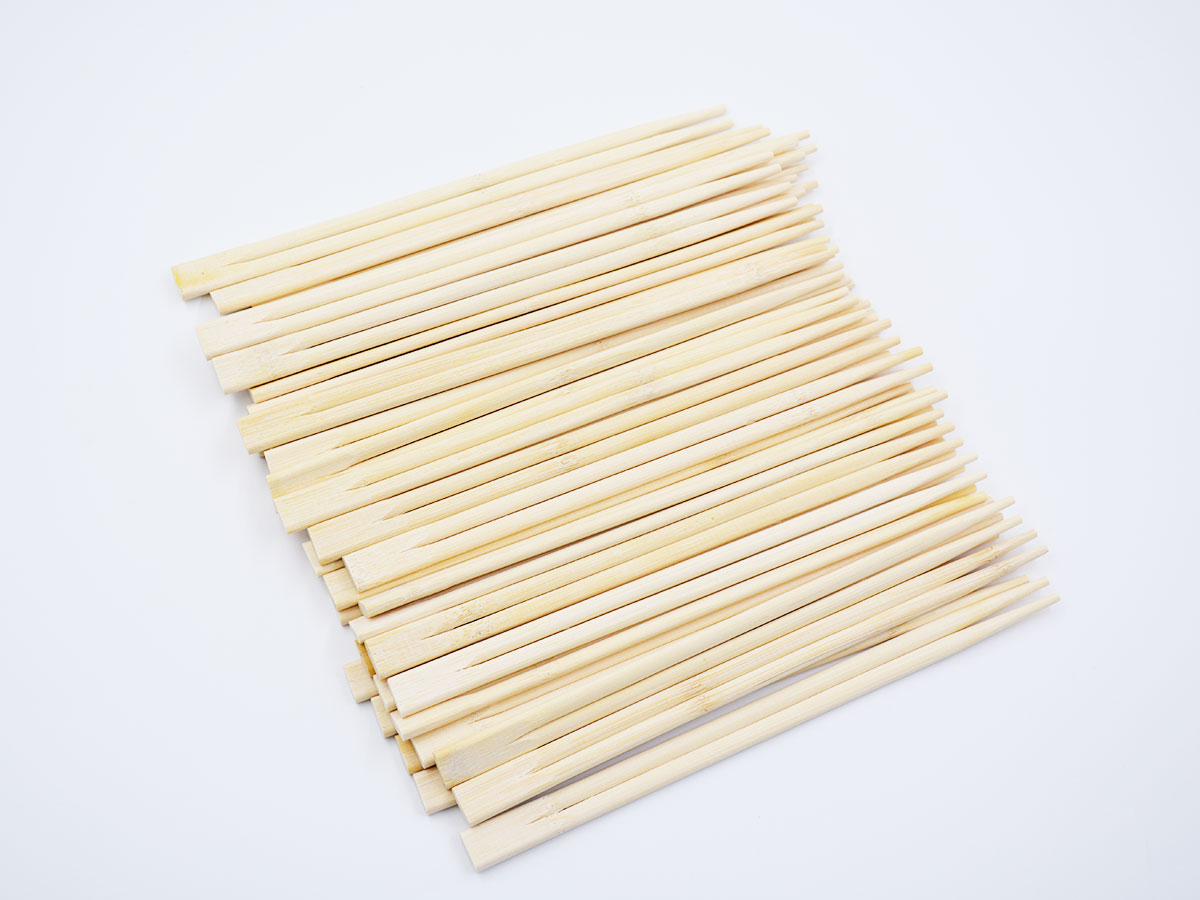
There are significant differences between wooden chopsticks and bamboo chopsticks in many aspects. The following is a detailed comparison between the two:
1. Materials and environmental protection
Wooden chopsticks:
Made of natural wood, commonly used woods include ash, birch, oak, maple, cypress, cherry wood, etc.
Wood is a renewable resource, but it requires cutting down trees, which has a certain impact on the environment.
Wooden chopsticks are relatively environmentally friendly if no preservatives are used during the production process. However, some wooden chopsticks may use preservatives during the production process, which may pose health risks.
Bamboo chopsticks:
Made of bamboo, commonly used bamboos are phoebe or moso bamboo.
Bamboo is a renewable resource, has a short growth cycle, does not require cutting down a large number of trees, and is environmentally friendly.
Bamboo chopsticks generally do not require the use of chemical additives during the production process, so they are relatively natural and safe.
2. Texture and usage experience
Wooden chopsticks:
The surface has been polished, feels smooth and delicate, and has a good use experience.
Different woods have different textures and colors, and wooden chopsticks often have a unique natural beauty.
Wood has good thermal insulation properties, so you won't feel hot when using wooden chopsticks to pick up hot food.
Bamboo chopsticks:
Lightweight and durable, the density of bamboo is small, so bamboo chopsticks are lighter and less prone to fatigue when used.
Bamboo fiber has a tight structure, good toughness and is not easy to break.
Bamboo chopsticks have good anti-slip properties. The surface of bamboo chopsticks is relatively rough and has high friction, making it difficult to slip when holding food.
3. Durability and service life
Wooden chopsticks:
The structure of wood is relatively tight and is not easy to deform or break during use.
If maintained regularly, such as applying cooking oil, etc., the service life of wooden chopsticks can be extended.
However, wooden chopsticks are susceptible to contamination, mold, and deterioration. It is generally recommended to replace them within 3 to 6 months of use.
Bamboo chopsticks:
Bamboo chopsticks generally have a short service life. The main reason is that the bamboo fiber structure is relatively loose and is easy to age and break after long-term use.
Bamboo chopsticks are prone to mold in a humid environment, affecting their service life.
4. Health and safety
Wooden chopsticks:
The hygiene of wooden chopsticks depends on the process of making and using them.
If preservatives are used in the production process of wooden chopsticks, it may cause health risks.
The surface of wooden chopsticks is relatively smooth, but they also need to be cleaned carefully and disinfected regularly to ensure hygiene.
Wooden chopsticks tend to harbor bacteria and may contain harmful substances such as E. coli and aflatoxin when moldy.
Bamboo chopsticks:
The surface of bamboo chopsticks is relatively rough and can easily harbor dirt and evil. Therefore, it should be washed carefully after each use to avoid bacterial growth.
Bamboo chopsticks can degrade quickly in the natural environment and will not cause long-term pollution to the ecosystem.
Bamboo chopsticks are not prone to bacteria, but they are susceptible to mold, so they need to be kept dry and disinfected regularly.
5. Cultural and emotional value
Wooden chopsticks:
The cultural and emotional value is more reflected in its unique aesthetics and craftsmanship.
Some high-end wooden chopsticks are not only tableware, but also exquisite handicrafts with collectible value.
Wooden chopsticks can be customized according to personal preferences, such as engraving, carving, etc., which increases the emotional value.
Bamboo chopsticks:
It has a certain symbolic meaning in traditional Chinese culture.
Bamboo chopsticks symbolize a simple and simple attitude towards life, which is in line with the concept of advocating nature in Eastern culture.
In some places, bamboo chopsticks are used as props for folk activities, such as bamboo chopstick dance.

